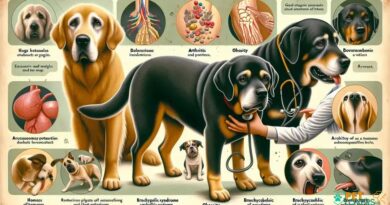What is Wags
What is Wags?
Wags is a term often associated with the joyful and enthusiastic tail movements of dogs, symbolizing their happiness and excitement. When a dog wags its tail, it communicates a range of emotions, from sheer joy to friendly greetings. Understanding the nuances of tail wagging can help dog owners interpret their pets’ feelings and reactions in various situations.
The Significance of Tail Wagging
Tail wagging serves as a vital form of communication among dogs. Different types of wags can indicate various emotions. For instance, a slow wag may suggest uncertainty, while a fast, vigorous wag often signifies excitement and happiness. Observing these behaviors can enhance the bond between dogs and their owners, fostering a deeper understanding of their canine companions.
Types of Wags
There are several types of wags that dogs exhibit, each conveying distinct messages. A high, fast wag typically indicates a happy and excited dog, while a low wag may suggest submission or insecurity. Additionally, a wagging tail held stiffly can signal agitation or aggression. Recognizing these differences is crucial for dog owners to respond appropriately to their pets’ needs.
Wags and Dog Behavior
Wags are closely linked to a dog’s overall behavior and temperament. A dog that frequently wags its tail is often perceived as friendly and approachable. Conversely, a dog that rarely wags may be feeling anxious or fearful. Understanding the context of a dog’s wagging can provide insights into its emotional state, helping owners create a more supportive environment.
Wags in Different Breeds
While all dogs wag their tails, the frequency and style of wagging can vary significantly across breeds. For example, some breeds, like Golden Retrievers, are known for their enthusiastic wags, while others may have subtler movements. This breed-specific behavior can be influenced by genetics, temperament, and socialization experiences, making it essential for owners to recognize their dog’s unique wagging style.
Wags and Social Interactions
Wags play a crucial role in social interactions among dogs. When meeting other dogs, a wagging tail can serve as a friendly greeting, signaling openness and a desire to play. However, it’s important to note that not all wags are friendly; a dog may wag its tail while feeling threatened or defensive. Observing the entire body language of a dog is essential for interpreting its intentions accurately.
Wags and Human Interaction
Dogs also use tail wags to communicate with humans. A wagging tail can indicate a dog’s eagerness to engage, whether it’s for playtime, a walk, or simply affection. Owners should pay attention to their dog’s wagging patterns to understand when their pet is seeking interaction or when it may need some space. This awareness can enhance the human-dog relationship significantly.
Training and Wags
Training can influence a dog’s tail-wagging behavior. Positive reinforcement techniques can encourage dogs to express happiness through wagging, especially during training sessions. By associating commands with rewards, owners can foster a more enthusiastic response, leading to a more engaged and happy pet. Understanding the connection between training and tail wagging can enhance the effectiveness of obedience training.
Wags and Health Indicators
Tail wagging can also serve as an indicator of a dog’s health. A sudden change in a dog’s wagging behavior may signal underlying issues, such as pain or discomfort. Owners should be attentive to any significant shifts in their dog’s tail movements, as these changes can provide valuable insights into their pet’s well-being. Regular veterinary check-ups are essential to ensure a dog’s overall health and happiness.



